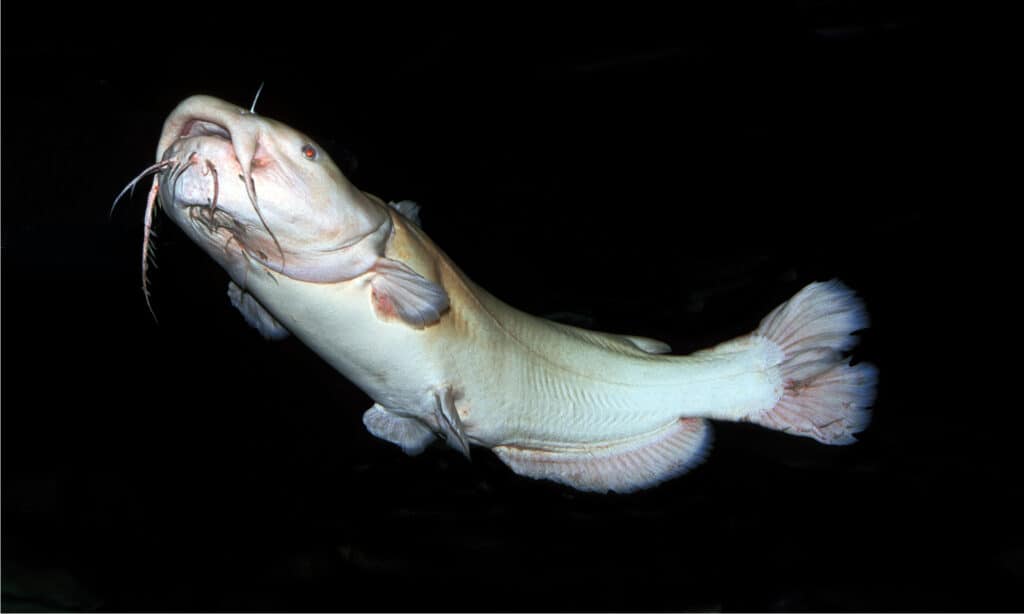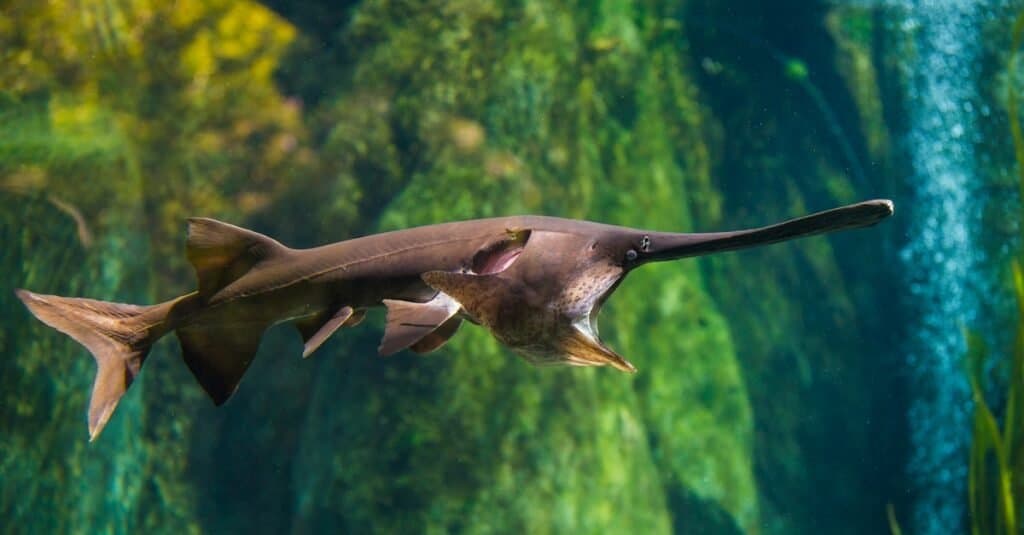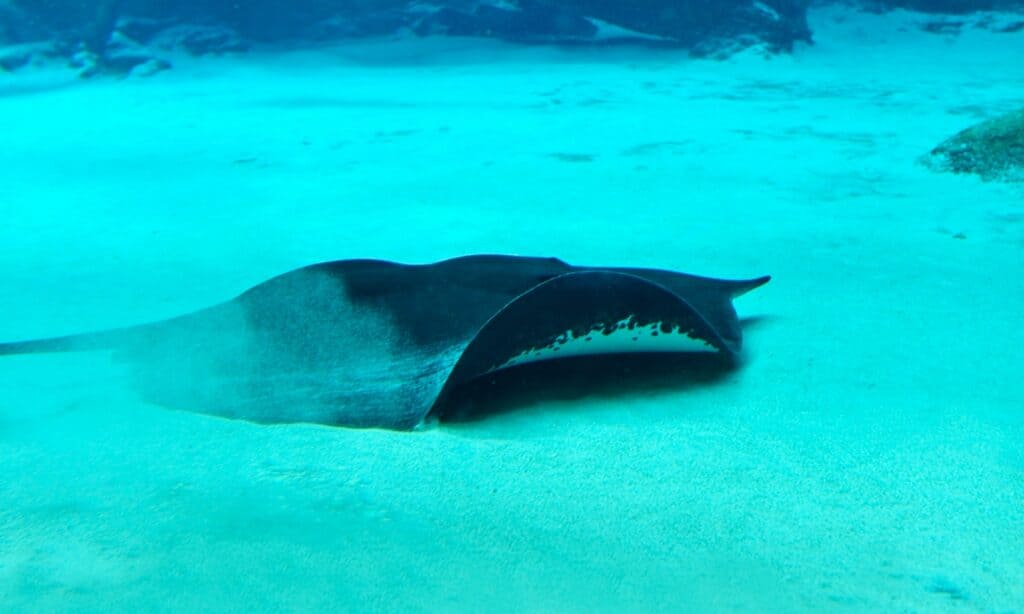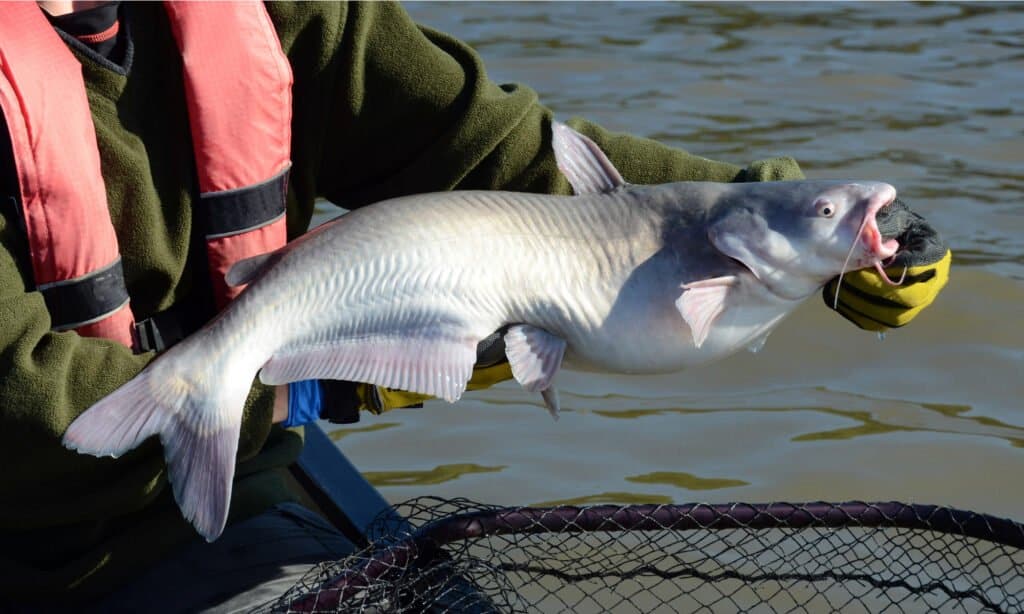Tennessee is one of the most biodiverse states in the nation, providing a vast home for different wildlife species in whopping numbers: 325 fish species, 340+ birds, 89 mammals, 70 amphibians, and 61 reptiles. It’s no surprise that this state has a reputation for fostering many animal species and providing a temporary or permanent home for them here.

Aside from being known for its diverse wildlife, Tennessee is also the place you might want to first go to if you love fishing, as this place has access to countless ponds, streams, rivers, lakes, and even available fish farms for fishing all year long. Tennessee is a good spot for relaxing and fishing, with 500,000 acres of lakes and 50,000 miles of streams and rivers that run into more than 1,000 lakes.
Where there is water in Tennessee, there is fish. Specifically, 325 species of fish reside in this state. Among the 325, some are huge and targeted for sports fishing. Today, we’ll learn about the five biggest fish in Tennessee, their diet, habitat, and how big they are compared to other fish species.
1. Lake Sturgeon

The lake
sturgeon
thrives within freshwater systems such as lakes, ponds, and rivers of Tennessee.
©Kletr/Shutterstock.com
| Lake Sturgeon | |
|---|---|
| Scientific name | Acipenser fulvescens |
| Length | Up to 7 feet |
| Diet | Leeches, crayfish, small fish, clam |
Known as a “living fossil” for having existed since around the Pleistocene epoch, the lake sturgeon has a fantastic lifespan of 82-152 years. Lake sturgeons are also well-known for having a pre-historic look, such as dinosaur-like scutes and a skeleton that is part cartilage and part bone. These species of fish don’t have teeth and instead, suck up food with their vacuum-like mouths and swallow it whole rather than chewing it into pieces. Lake sturgeons are unique-looking fish and are also known for having diamond-shaped pupils, adding to their ancient-like appearance.
Lake sturgeons thrive within freshwater systems such as lakes, ponds, and rivers of Tennessee. They also forage along the bottom of water bodies, or benthic regions. They prefer environments with sand and gravel substrates during the breeding season and silt or mud seafloors to hunt for food.
2. Flathead Catfish

Young flathead catfish feed on invertebrates like worms, insects, and crayfish.
©slowmotiongli/Shutterstock.com
| Flathead Catfish | |
|---|---|
| Scientific name | Pylodictis olivaris |
| Length | Up to 3-4 feet |
| Diet | Crayfish, Carp, Sunfish, Largemouth bass |
This giant catfish prefers to live deep in the slow-moving streams, rivers, canals, lakes, and reservoirs of Tennessee. Flathead catfish are also among the largest sports fish not only in Tennessee but also in neighboring states where fishing is primarily a recreational activity. Unlike other species of catfish that are usually scavenging on dead fish and other organisms in the water, the flathead catfish preys only on live fish.
Young flathead catfish feed on invertebrates like worms, insects, and crayfish. When they reach an average length of 10 inches or larger, they prey on carp, suckers, sunfish, largemouth bass, and other catfish, including their kind, resulting in cannibalism. Adult flathead catfish are primarily solitary and prefer to stake out their favorite sport under a tree or inside a cove deep in the water.
3. Paddlefish

Paddlefish are filter-feeders, meaning they only consume small prey such as zooplankton, small insects, or insect larvae.
©Saran Jantraurai/Shutterstock.com
| Paddlefish | |
|---|---|
| Scientific name | Polyodon spathula |
| Length | Up to 7.2 feet |
| Diet | Zooplankton, small insects, insect larvae, small fish |
The paddlefish, which is a relative of the sturgeon, is an archaic fish to have existed since the Cretaceous Period, meaning it swam on some bodies of water where species of dinosaurs and other prehistoric animals drink and hunt for food. Paddlefish are primitive fish that are native to the Mississippi River but are also found in the free-flowing rivers of Tennessee. They mainly thrive in freshwater but can also survive in brackish water environments, and they usually choose habitats with deep water as deep as six meters or greater.
Paddlefish are filter-feeders, meaning they only consume small prey such as zooplankton, small insects, or insect larvae, despite their massive size, by opening their mouth wide and filtering the food through their gills. The other paddlefish species, the Chinese paddlefish, was declared extinct in 2005, with the last confirmed sighting dating back to 2003. The last Chinese paddlefish in captivity, which is named “Panda,” died in 2020. The largest Chinese paddlefish recorded was 9.8 feet in length, while the largest a regular paddlefish could get is up to 7.2 feet.
4. Giant Whiptail Ray

The giant whiptail ray is a benthic ray that loves to spend most of its time submerged in the water.
©iStock.com/slpu9945
| Giant Whiptail Ray | |
|---|---|
| Scientific name | Himantura dalyensis |
| Length | Up to 6.5 feet |
| Diet | Mollusks, crustaceans, jellyfish, bony fishes |
Native in the freshwaters of Thailand, the giant whiptail ray is a benthic ray that loves to spend most of its time submerged in the water, laying down or buried under the seafloor with its eyes sticking out. Giant whiptail rays prefer this as a defense mechanism rather than an aggressive way to hunt or surprise their prey. They get tired just by swimming, which is why they always remain buried under the sand or mud to avoid becoming lunch for their main predators, which are hammerhead sharks.
Most giant whiptail rays are confined to marine habitats, but some migrate into estuarine environments. A few species of these giant rays are also well-adapted to living in fresh and saltwater all year round. Due to certain factors such as habitat destruction, fishing pressures, and restrictions on its freshwater habitat, the chances of biological extinction in the wild of these rays are deemed extremely high, as this species is now close to being considered critically endangered throughout its known range.
5. Blue Catfish

Blue catfish prefer to live in habitats with deep water present and free-flowing currents.
©M Huston/Shutterstock.com
| Blue Catfish | |
|---|---|
| Scientific name | Ictalurus furcatus |
| Length | Up to 5 feet |
| Diet | Worms, clams, crustaceans, mussels, insects, small fish |
Known as the cousin of the large flathead catfish, the blue catfish is known as one of the largest catfish species in America. Despite its name, its color is mainly dark grey and blue coloration. In addition, some of its sides have a silver coloration, while its underbelly is white. So, it is not blue at all.
Blue catfish are large catfish that primarily thrive in freshwater habitats, although they can still survive in brackish water ecosystems with a mix of freshwater and saltwater. They prefer to live in habitats with deep water present and free-flowing currents. They also enjoy staying in areas with piles of rocks for shelter or sandy bottoms where they can rest or wait for their prey. Their diet varies based on their age and size. Young blue catfish feed primarily on plankton and other tiny organisms, while adult blue catfish feed on insects, worms, clams, larvae, and other small fish. Some bigger-sized adults hunt for frogs and larger species of insects.
Summary of the 5 Biggest Fish in Tennessee
| Fish | Length | |
|---|---|---|
| 1 | Lake Sturgeon | Up to 7 feet |
| 2 | Flathead Catfish | Up to 4 feet |
| 3 | Paddlefish | Up to 7.2 feet |
| 4 | Giant Whiptail Ray | Up to 6.5 feet |
| 5 | Blue Catfish | Up to 5 feet |
The photo featured at the top of this post is © Saran Jantraurai/Shutterstock.com
Thank you for reading! Have some feedback for us? Contact the AZ Animals editorial team.






